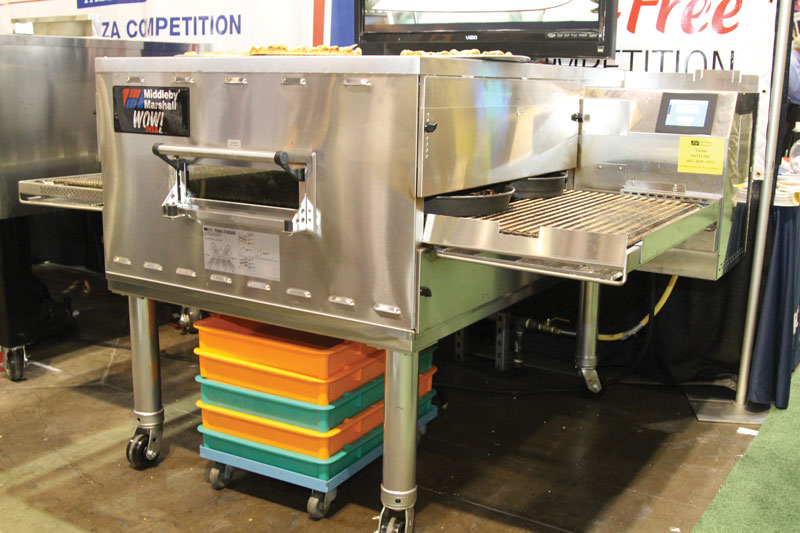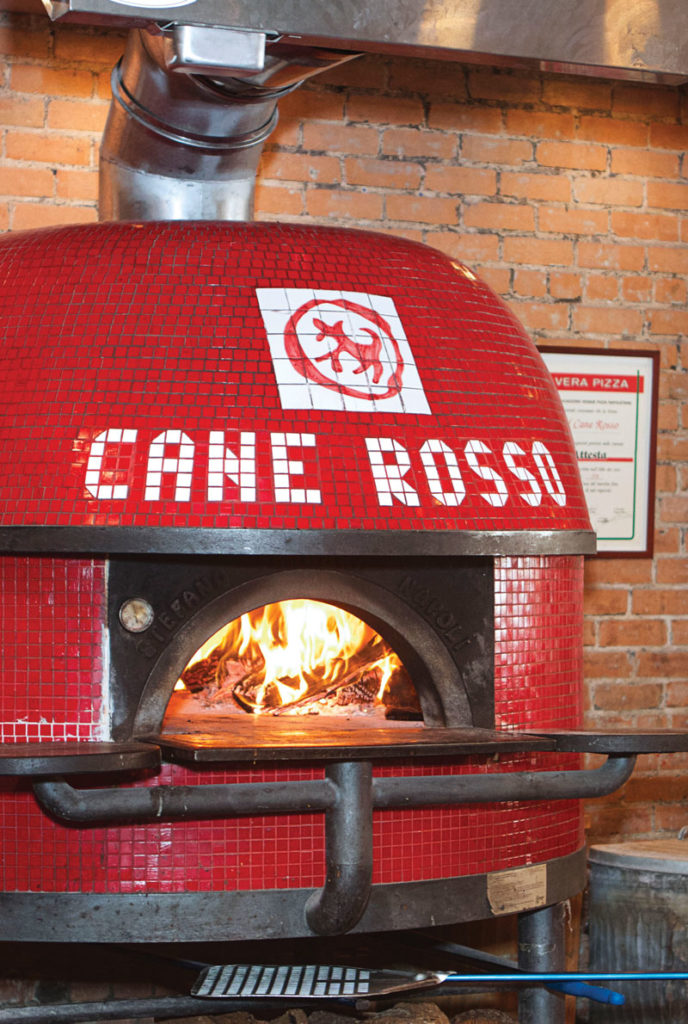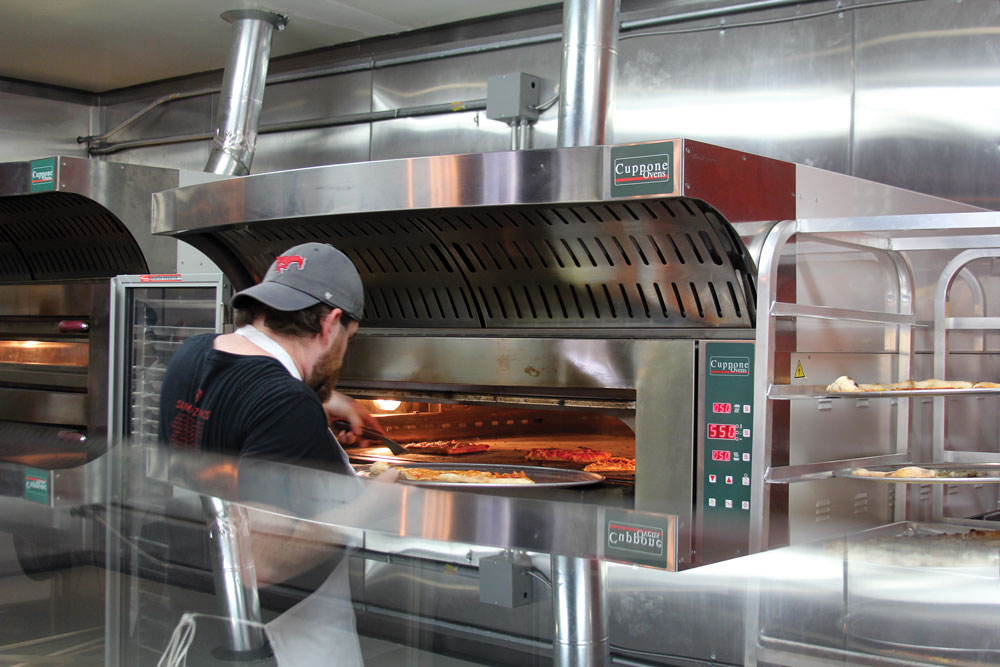Your oven is the heart and soul of your operation—and your most expensive purchase when building a successful pizzeria. Choosing the right type for your pizzeria is a decision that should be made only after careful thought and research. “Too many times we look at ovens as a means to an end—baking a pizza—but it’s a whole lot more than that,” notes Tom “The Dough Doctor” Lehmann, a Manhattan, Kansas-based consultant to the pizza restaurant industry. “Some ovens won’t bake certain types of pizzas well at all, while other ovens are desirable for the unique ambience they add. You want to make sure your oven matches your store concept, because every oven has its own unique applications where it shines.”
Your Operation: Versatile
Your Oven: Deck
These multitaskers are excellent for cooking a wide variety of items. If you offer breadsticks, wings, pasta, chicken dishes and other items, deck ovens can be used for cooking across the board. You can also add flexibility by using cooking containers with lids to avoid drying out items, or cook on a screen to regulate heat absorption.
Deck ovens are available in two varieties. Some deck ovens have 1.5” or less of deck material; anything thicker can be considered stone hearth (though the decks can be made of stone or a composite material). The stone hearth type stores more latent heat and can make pizzas faster, without requiring long recovery times that can slow your production.
Deck ovens do have some potential downsides. Your production capacity may be limited, and they do require some hands-on work, including setting the temperature, rotating the pies and monitoring during cooking by the oven tender. On busy nights, tracking product can be more challenging, but they add a certain ambience to the pizzeria, as they showcase pizzaioli personally interacting with customers’ pies. Stone hearth ovens can even feature a gas log in the oven to create a wood-fired-type ambience without the hassle.
Ultimately, these are great entry-level ovens and generally easy to operate. Maintenance-wise, gas-operated deck ovens offer simple upkeep and construction, but in certain locations, local regulations may require electric models.
 |
|
Known for foolproof cooking, conveyor ovens are a great choice for high-volume operations. |
Your Operation: High-volume
Your Oven: Conveyor/Air Impingement
In the past, conveyor ovens were available in two types—infrared and air impingement—though the former has become less popular in recent years. Conveyors are known for their no-brainer operation and foolproof cooking, without the need for an oven tender; an employee simply places the product on the conveyor at one end and removes it at the other. They’re ideal for high-volume operations, where churning out product at a fast pace is the most important consideration.
But there are some issues to consider before choosing this oven type. Employees must make sure that everything entering the oven is consistently assembled so the product gets baked properly. Hence, dough should always be at about the same temperature entering the oven, and dough formulations should be similar from day to day to ensure appropriate baking conditions.
Operational knowledge is key to success with these types of ovens. Conveyor ovens bake through highly focused air columns—controlled through finger pattern—from the top and bottom of the oven. The fingers are adjustable, so they can be open, closed or anything in between, and they’ll determine how the product bakes. For example, if you switch your type of cheese, it can scorch or burn in a conveyor oven with the wrong settings. However, you can replace fingers for about $100 per position. Trial and error will dictate your optimal configuration.
If you make different styles of crusts, a conveyor oven may provide less flexibility than a deck oven, but you do have options. You can stack ovens, running each at two different times and temperatures, or you can try a split conveyor (with fingers designed to suit the split). But, generally, conveyor ovens tend to be dedicated to a certain product, developed specifically for what you make most; they can’t be adjusted throughout the course of the day.
When purchasing equipment, make sure the oven is designed for cooking pizza. Tom Lehmann recalls frustrated operators who have purchased deck ovens that are better for bread baking or conveyor ovens that were configured for a seafood chain, requiring costly finger replacement and configuration. Even though it looks like a pizza oven, it may be all wrong for your operation!
Your Operation: Restaurant
Your Oven: Convection
Often confused with air impingement types, convection ovens are great for making a variety of baked goods, including breads, rolls, cakes and cookies, or for specialty items such as toasted sandwiches. Convection ovens utilize fans to move air flow around the oven, but there is no focused heat on the bottom of the oven.
At Gelsosomo’s Pizzeria (gelpizza.com) in Crown Point, Indiana, owner Peter Anderson utilizes double-stacked convection ovens to heat calzones, certain pizza styles and breads, while a conveyor oven handles thin-crust pizzas for his high-volume operation. “Convection ovens are great for things that need a longer cook at a lower temperature,” he notes. “We use them for our thick, deep-dish and Sicilian-style crusts.” The ovens do take up a bit of space (each is about as wide as a typical refrigerator, Anderson estimates), but they’re helpful in expanding his variety of menu offerings, he says.
Convection ovens can also be more affordable than other types. Though pizza-focused operations might not solely choose a convection oven, they can be useful as second ovens or for restaurants that focus more on other foods while offering pizzas as well.
 |
|
A brightly colored, logoed wood-burning oven lends crowd-pleasing theatrical flair to Cane Rosso, a Neapolitan pizzera in Dallas. Photo by Emily Loving |
Your Operation: Artisan
Your Oven: Wood- or Coal-Burning
These ovens can be strictly wood- or coal-burning, or they can combine these heat sources with gas. The latter is easier to maintain because the oven can be idled at 300°F to 350°F at night, then fired up in the morning with coal or wood, bringing it back to baking temperature in about three hours. Many operators prefer not to visit the shop on days the store is closed just to add wood or coal to maintain temperature, and gas eliminates this need.
When choosing this option, ensure you have a consistent supply of the same type of wood or coal and put in roughly the same amount each time to maintain consistent temperature. You should also purchase a hand-held infrared thermometer to monitor the temperature of your deck.
Make sure your local regulations allow for a wood- or coal-fired oven; some areas might require a catalytic converter, while some allow these ovens only when they have been grandfathered in. Also find out whether your insurance company allows this type of oven in your particular facility. Strip mall settings, for example, often forbid them, or you may need a special permit.
Finally, a skilled operator must monitor product; cooking in these ovens is a specialized skill, so staffing and product consistency can be a challenge. However, if you can make this option work for you, it promises high-quality results, creating delicately charred crusts and smoky flavors that cannot be replicated in any other type of oven. You can also cook pizzas quickly, as these ovens can be heated to 900°F or higher; however, you will need to have a high-absorption dough (containing 70% or more water) to create the light and bubbly crust this oven produces best.
Wood- or coal-fired ovens are best suited for dine-in operations, as these crusts can quickly lose their crispness, making them less appropriate for delivery. But these ovens can cook a variety of menu items, from pasta and wings to meat-focused mains. And don’t forget the marketing advantage: These ovens are visually compelling and offer built-in bragging rights and unmatched ambience in high-end or artisan shops!
When your oven isn’t working properly, you lose money for every minute of downtime. Before buying an oven, ask the manufacturer if you must work with them directly to obtain parts and what their response time is when service is required.













